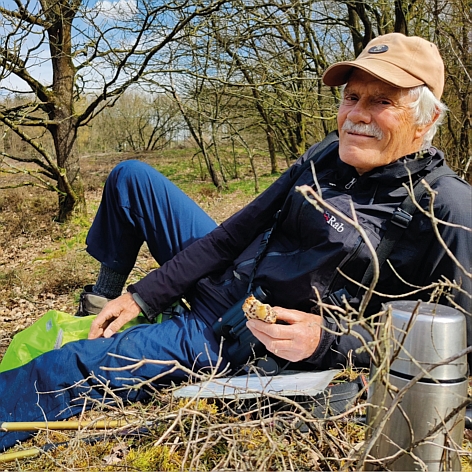Obituary: A life devoted to bee protection: the legacy of Pieter Oomen
DOI:
https://doi.org/10.26786/1920-7603(2024)815Abstract
Dr. Pieter Oomen, born in 1946, a prominent and inspirational scientist in many areas of the biosafety of pesticides, most notably ecotoxicology, regulatory, risk assessment and bioassays, passed away peacefully on 19th of January 2024. His efforts have had a great and long-lasting impact on bee risk assessment and have improved bee protection. While we will miss a very warm and brilliant person; his many contributions to science and our ability to detect and mitigate risks to the environment remain.
References
OECD Guidance Document No. 75 (2007) Guidance document on the honey bee (Apis mellifera L.) brood test under semi-field conditions. Series of testing and assessment, Number 75. ENV/JM/MONO 22, 11-27.
OEPP/EPPO (2001) EPPO Standards PP1/170(3) Test methods for evaluating the side-effects of plant protection products on honeybees. OEPP/EPPO Bulletin 31, 323-330. https://doi.org/10.1111/j.1365-2338.2001.tb01002.x DOI: https://doi.org/10.1111/j.1365-2338.2001.tb01002.x
OEPP/EPPO (2003) EPPO Honey bee risk assessment scheme (PP 3/10 (2), Chapter 10, OEPP/EPPO Bulletin 33, 141-145. https://doi.org/10.1046/j.1365-2338.2003. DOI: https://doi.org/10.1046/j.1365-2338.2003.00619.x
x
Oomen PA (1986) A sequential scheme for evaluating the hazards of pesticides to bees, Apis mellifera. Mededelingen van de Faculteit Landbouw-wetenschappen Rijksuniversiteit Gent 51, 1205-1213.
Oomen PA (1999) Honeybee poisoning incidents over the last ten years, as reported by beekeepers in the Netherlands. In: Belzunces LP, Pelissier C, Lewis GB (eds) Hazards of Pesticides to Bees. Avignon France, INRA Les Colloques 98, pp129-135.
Oomen PA, De Ruijter A, Van Der Steen J (1992) Method for honeybee brood feeding tests with insect growth-regulating insecticides. OEPP/EPPO Bulletin 22, 613–616. https://doi.org/10.1111/j.1365-2338.1992.tb00546.x DOI: https://doi.org/10.1111/j.1365-2338.1992.tb00546.x

Downloads
Published
How to Cite
Issue
Section
License
Copyright (c) 2024 Jens Pistorius, Tom Steeger, Anne Alix , Helen Thompson, Guy Smagghe, Sjef van der Steen, Peter Kevan

This work is licensed under a Creative Commons Attribution 4.0 International License.











